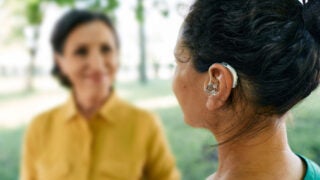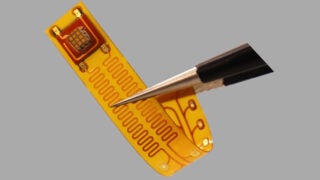Pollution Prescription on Your Morning Freeway Commute
You can get as much as a half of your daily air pollution exposure on your drive.
Scott Fruin is on a mission to study the ways pollution can creep into every part of our lives. He targets a form of pollution that Angelenos are all too familiar with—the daily commute.
“If you have a long, typical morning rush-hour commute on freeways, you can get half or a third of your entire daily air pollution exposure in that commute,” says Fruin, assistant professor of preventive medicine at the Keck School of Medicine of USC.
If you have a long, typical morning rush-hour commute on freeways, you can get half or a third of your entire daily air pollution exposure in that commute.
Rolling up car windows cuts exposure, but benefits vary widely from car to car and by ventilation setting. To learn more, Fruin outfitted a Honda Insight Hybrid with specialized instruments so that his team could measure air pollution while driving a typical commute on freeways and main roads.
With a car packed tight with wiring, bulky air quality monitors and a three-pronged weather station on top, “people do look at us when we’re driving around,” Fruin says. The car even has ducts in the back windows to make sure it only samples outdoor air and isn’t contaminated with carbon dioxide from the driver’s breath.
After testing 60 cars with many of the same instruments, the message became clear: The best way to breathe cleaner air is to drive with the windows up and the fan on the recirculate setting. That dropped air pollution by as much as 80 percent for newer cars at freeway speeds, he says.
The best way to breathe cleaner air is to drive with the windows up and the fan on the recirculate setting.
Besides measuring driving exposures, the car’s mobility makes it a good complement to the system of 30 fixed air quality monitors around Los Angeles. It was critical to a 2014 study that found that airplane landings and takeoffs at Los Angeles International Airport worsen air quality more than 10 miles east of the airport, a far larger area than previously assumed. Fruin and his colleagues discovered that ultrafine particle concentrations are routinely doubled over a 25-square-mile area east and downwind from the airport boundary. To continuously monitor air quality downwind of the airport, they covered the area by car, sucking in air samples for five to six hours at a time.
They’re now trying to follow up their airport work to see if people in the zone are at increased risk for asthma, and they’re also looking for differences in the chemical makeup of airport and freeway particles. “If the composition is similar enough, that’s cause for concern, since studies have shown a higher disease risk for those living close to freeways and busy roads,” Fruin says. They’re also studying people with asthma living both under and away from the flight paths.
Fruin warns that although scientists tend to focus on air pollution outdoors, exposure to bad air from indoor sources can be surprisingly high. “Anytime there’s anything you can smell,” he says—whether scented candles, household cleaners or cooking with natural gas from the stove—“you can end up getting very high exposures, because indoor air doesn’t circulate and turn over as much.”



